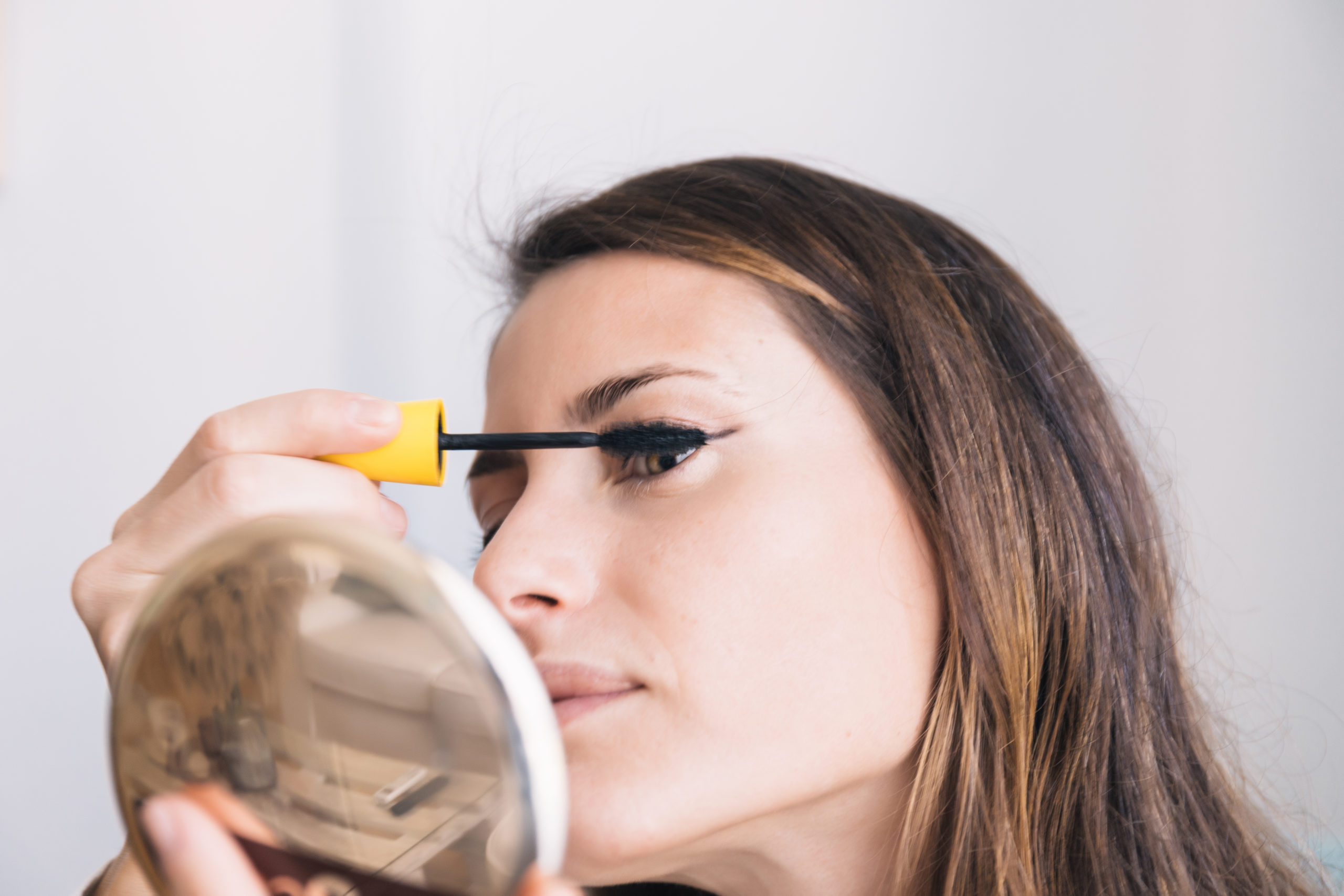Educate them on how to use cosmetics safely, and what to avoid
Cosmetics have been used for centuries to enhance the eyes. Research suggests that a large proportion of women of all ages use facial and eye makeup, with mascara, eyeliner and eyeshadow being among the most commonly applied products. Yet eye cosmetics can exacerbate tear film instability and symptoms of dry eye, as well as cause many other adverse effects and complications. Educating patients on the risks and proper use of eye makeup is important. Here are some common mistakes your patients may be making.
Improper application and use of false eyelashes or lash extensions. These have become a very popular way to enhance the eyes. When applied correctly by a licensed professional, eyelash extensions can be perfectly safe. However, many people use DIY false eyelashes applied with glue, adhesives or magnets. Applied improperly, these products may cause lash pain, infection and loss of natural lashes.
Let patients know that infections can occur if bacteria collect under the eyelash glue, or if they store and reuse false lashes. There is a risk of harmful bacteria and dirt entering the eye. Advise patients to thoroughly clean their eyelids after removing fake lashes and to avoid sharing them with others, which can cause cross-contamination and lead to styes or conjunctivitis. There is also a chance of an allergic reaction to the glue used to adhere false lashes to the eyelid.
Risky eye makeup techniques. Eyeliner techniques known as “tightlining” or “waterlining” refer to applying the product on the inside of the eyelid between the lashes and the eye. Warn patients that this technique may harm the most delicate part of the eyelid, the area where the meibomian glands are found, which produce the oils necessary for a healthy tear film.
Using eyeliner in this area can clog the glands and interfere with these oils. And, the eyeliner can find its way into your tears, causing microabrasions on the eyes.
Using products with harmful or irritating ingredients. Under U.S. law, cosmetic products and ingredients do not need FDA approval. The cosmetics industry is largely self-regulated, with few systems in place to monitor the safety of products once they are on the market. In a three-part series on the dangers of cosmetics for the Optometry Times, Tracy Schroeder-Swartz, OD, includes a long list of ingredients known to cause harmful reactions.
These include common substances known to exacerbate ocular surface disease (OSD), more common among people who wear eye cosmetics:
- Benzalkonium chloride (BAK)
- Retinol/retinoids: Found in skincare products
- Alcohol: Drying agent
- Parabens
- Formaldehyde
If your patients who wear eye makeup are experiencing discomfort or symptoms, encourage them to research the ingredients in the products they’re using.
Not removing their makeup. Let patients know that all makeup should be removed every night with an eye makeup remover (one that does not contain BAK) rather than baby oil, Vaseline or soap. “Not removing all makeup may cause skin inflammation, breakouts, and significantly increase dry eye symptoms,” noted Dr. Schroeder-Swartz.
She adds that nightly moisturizers are more likely to contain anti-aging ingredients such as alpha-hydroxy acids (AHA) and vitamin A. Retin-A formulations can dry out ocular skin and may exacerbate dry eye.
Safety tips for patients who use cosmetics
Encourage patients to schedule an appointment if they experience any irritation, redness or other eye problems. Let them know that only an experienced eye care professional can determine whether the problem is caused by cosmetics or something else, like poor contact lens hygiene, dry eye disease or pink eye.
Here are some other tips to share with your patients:
- Wash your hands before applying eye cosmetics to avoid bacteria that could cause infections.
- Regularly clean and/or replace brushes, sponges and makeup applicators used in the eye area.
- Remove all makeup every night.
- Do not share cosmetics.
- Do not use makeup past its expiration date, and do not add saliva or water to moisten dried-up products; this may introduce bacteria.
- If you have an eye infection or irritation, avoid using eye cosmetics. To prevent reinfection, discard eye cosmetics you were using when you got the infection.
Share this video on your website, social media pages or in emails to patients to reinforce these messages: Beware the Dangers of Eye Makeup.

